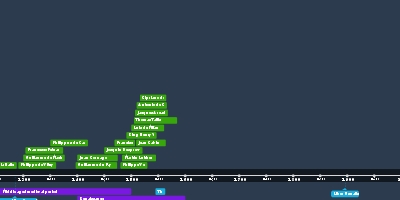Medieval Mass and other things (jan 1, 850 – jan 1, 1100)
Description:
The aim of Mass was to address God and reinforce the faith of attendees, presenting fundamental truths to grip mind and heart (the singing was supposed to grip the heart). It was the focal point for medieval religious life, as the average life expectancy was less than 30 years.The church calendar is the schedule of liturgy which has different music to fulfill its components according to the day (Mass Proper), as opposed to components fulfilled by the same music for every Mass (Mass Ordinary).
The Office was what monasteries did outside of Mass. They would pray and sing psalms at regular times throughout the day and night. Office liturgy between monasteries could differ in some respects, but they all had (1) many psalm singings, (2) antiphons (chant sandwiching the psalm singing), (3) lessons with responsories, (4) hymns (were strophic), (5) canticles (poetic biblical passages not from the psalms), and (6) prayers. The cycle of the 150 psalms was sung weekly.
Chant singing styles
- Responsorial: soloist alternates with choir/congregation
- Antiphonal: 2 choirs alternate
- Direct: choir sings together (no alternation)
Chant settings
- Syllabic: 1 note per syllable
- Neumatic: 1-6 notes (1 neume) per syllable
- Melismatic: more than 6 notes per syllable
*chants can mix these styles*
With little notation, they often used recitation formulas (simple melodic outlines that can be used with many different texts) to help with memorization.
Added to timeline:
Date:
jan 1, 850
jan 1, 1100
~ 250 years
